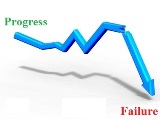What Project Managers Should Know About Eye Vision and Employee Performance

Project managers recognize the crucial role of employee health in maintaining high productivity levels. Employees’ overall wellness directly impacts their ability to perform effectively, which is why many business leaders now invest in benefits such as gym memberships to minimize unplanned absences. However, there is an urgent need for a greater focus on vision health within the workplace.
According to the World Health Organization (WHO), eye-related issues are increasingly prevalent, affecting over two billion people worldwide with varying degrees of vision impairment (WHO, August 2023). These issues range from minor concerns like eye strain to more severe conditions like vision loss. These vision problems pose challenges in personal life and significantly affect professional performance due to the heavy reliance on visual tasks in most occupations.
The increasing prevalence of vision health issues underscores the need for a comprehensive approach to employee wellness. This approach should focus on vision health, as it can enhance personal and professional well-being and productivity.
The Impact of Poor Vision on Employee Performance
Physical Consequences
Poor vision can trigger a cascading array of adverse effects on an individual’s well-being. Individuals might overexert themselves to compensate for inadequate eyesight, leading to physical strain and fatigue.
This overexertion often causes people to tense their bodies to see better, resulting in muscle aches, reduced mobility, and lowered energy levels over time. Such conditions increase the likelihood of employees taking more sick leaves or experiencing a slowdown in their work pace.
According to a report by Benefits Pro, even minor vision impairments can result in up to a 20-minute loss of productivity per day, culminating in an estimated annual productivity loss of over $400 billion globally due to vision-related issues.
Mental Health Consequences
Beyond physical symptoms, vision impairments can profoundly affect mental health. A CDC survey revealed that adults believe vision loss would most significantly impact their daily lives, potentially leading to depressive thoughts.
Within the workplace, these mental health challenges can manifest as feelings of inadequacy, isolation, and dissatisfaction, undermining an employee’s work performance. This increases the risk of poor-quality work and increases the likelihood of unexpected resignations. The remaining employees may become disengaged, a sentiment that can infect the wider team and erode overall morale.
According to Snap Surveys, such a decline in morale can precipitate higher turnover rates and decreased profitability. These insights underscore the critical need for organizations to prioritize vision health as part of their overall employee wellness programs to safeguard both individual well-being and organizational productivity.
Promoting Good Vision Among Employees
The state of ocular health varies significantly from person to person and is influenced by numerous individual factors. To help make optimal eye health more attainable, project managers and business leaders can implement several effective strategies.
Consider these suggestions:
1. Offer Professional Eye Care
- According to a 2022 MyVision survey, nearly 50% of adults are overdue for an eye checkup, primarily due to concerns about cost and complexity.
- Vision coverage is often absent from standard insurance packages, causing many to pay out-of-pocket. As a leader, you can mitigate this by:
- Including comprehensive vision coverage in employee benefits.
- Partnering with third-party providers for regular eye exams.
- Establish partnerships with retailers like Target and Walmart that offer affordable eye tests to help identify issues early and prevent them from worsening.
2. Provide Protective Eyewear
- For starters, look into blue light glasses for office workers. These glasses are essential for office workers, as they come with special lenses that filter out harmful blue-violet light emitted from digital devices.
- With average screen times exceeding seven hours daily, unprotected exposure can lead to retinal damage and other visual impairments (AOA, Healthy Eyes).
- Blue light glasses are designed for comfort, suitable for daily use, and available in various styles from popular brands like Ray-Ban and Versace, ensuring a fit for every budget.
Also, consider sponsoring safety glasses for more specialized fields, like construction. Across the board, more than 2,000 workers experience eye injuries every day. Conversely, 90% of these injuries can be prevented with the proper eyewear. Brands such as Bobster and Fuglies are certified to protect against common workplace risks like debris and chemicals. This eyewear may require an initial investment, but its benefits will be worth it.
Conclusion
In conclusion, vision health’s integral role in employee wellness cannot be overstated. Project managers and business leaders are encouraged to recognize and actively address the diverse vision needs of their workforce.
Organizations can proactively mitigate the impact of vision impairments on employee performance and mental health by implementing strategies such as providing comprehensive eye care benefits, protective eyewear, and regular vision screenings. Prioritizing vision health enhances productivity and contributes to a healthier, more engaged, and more resilient workforce.
By safeguarding the vision of their employees, companies stand to gain significantly in terms of reduced absenteeism, lower turnover rates, and overall profitability. Embracing these initiatives will equip employees to perform at their best, fostering a supportive and productive workplace environment.










